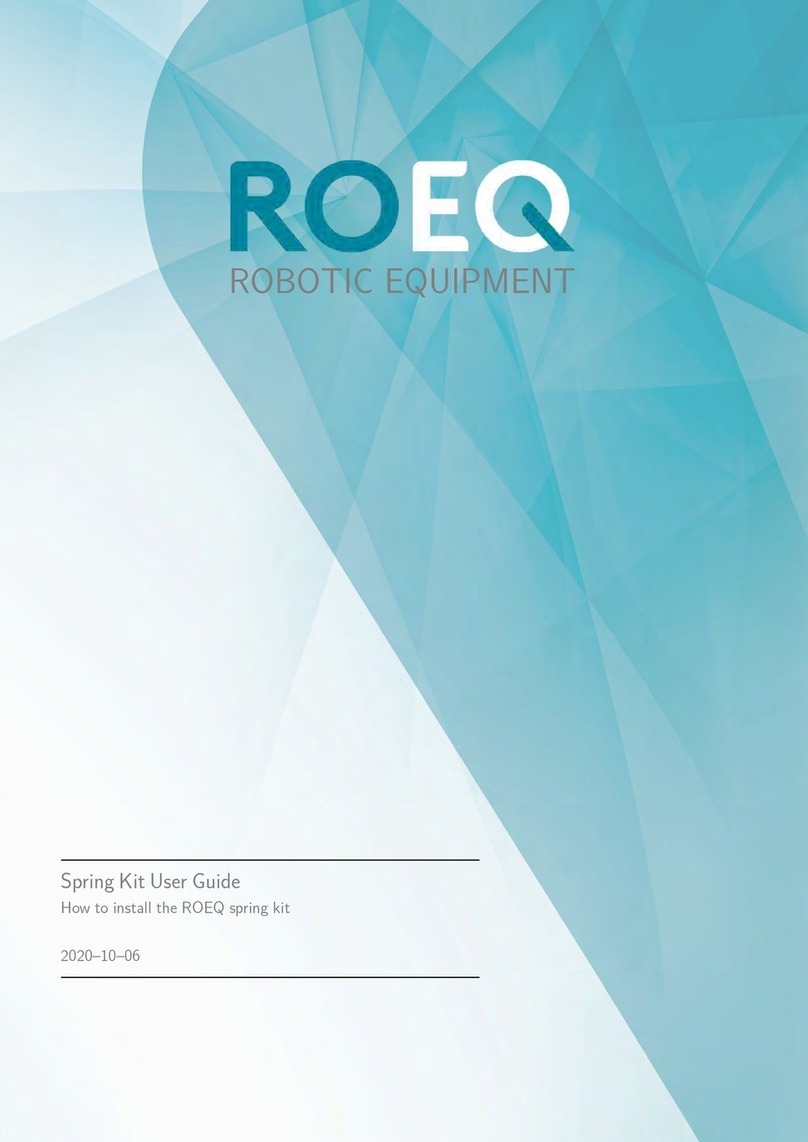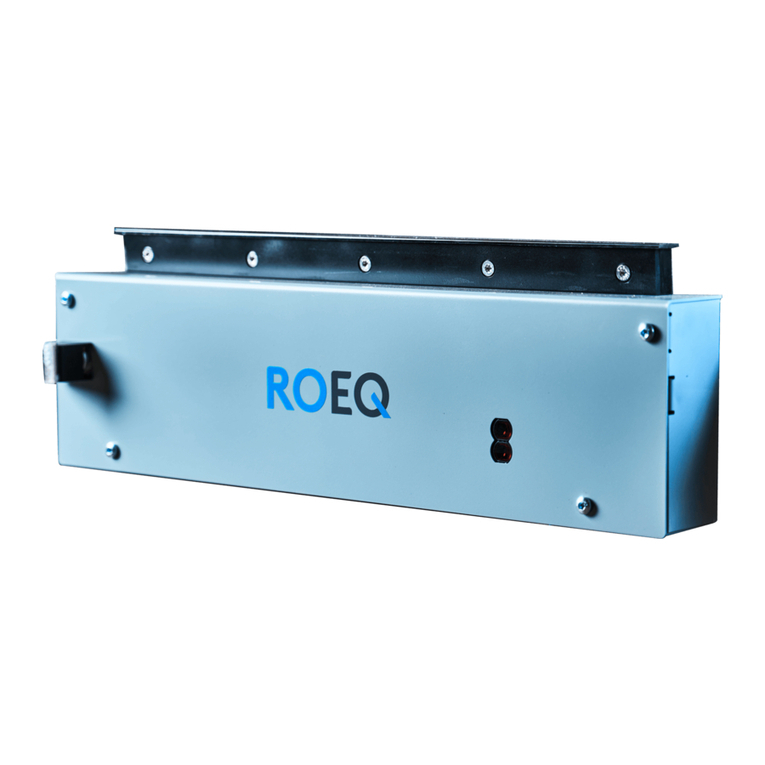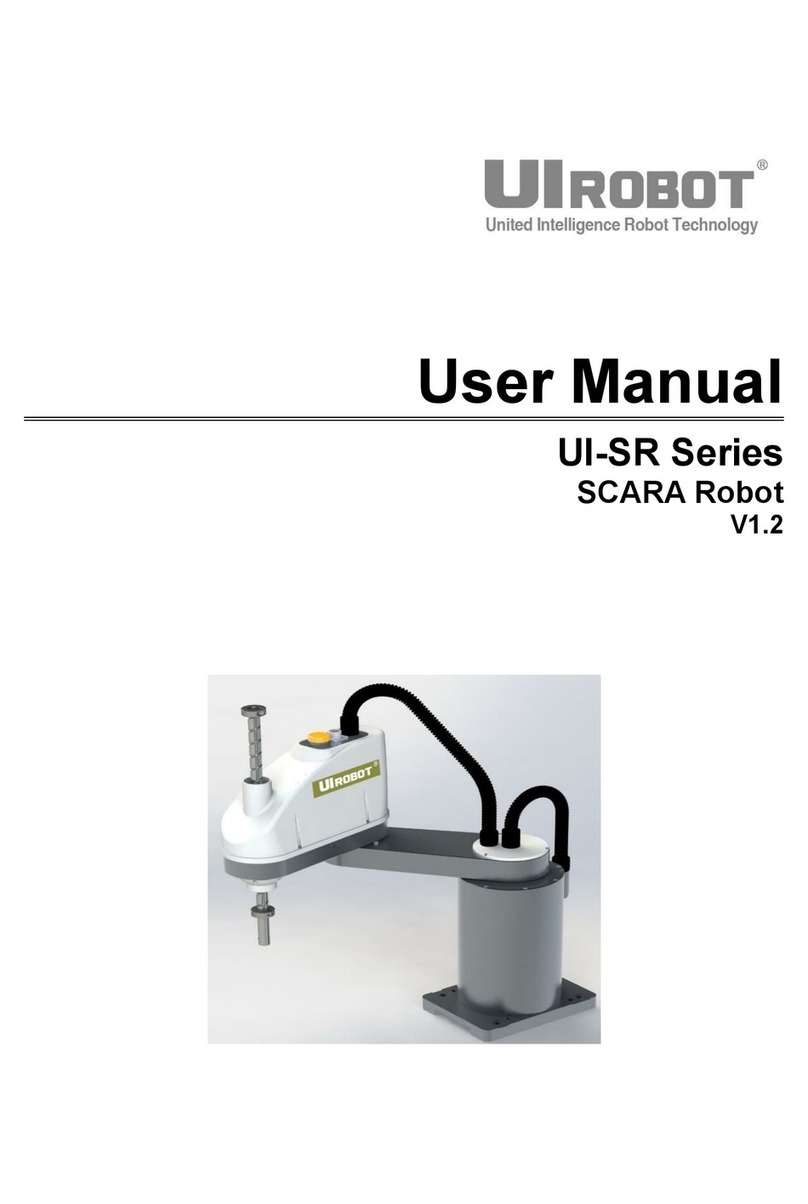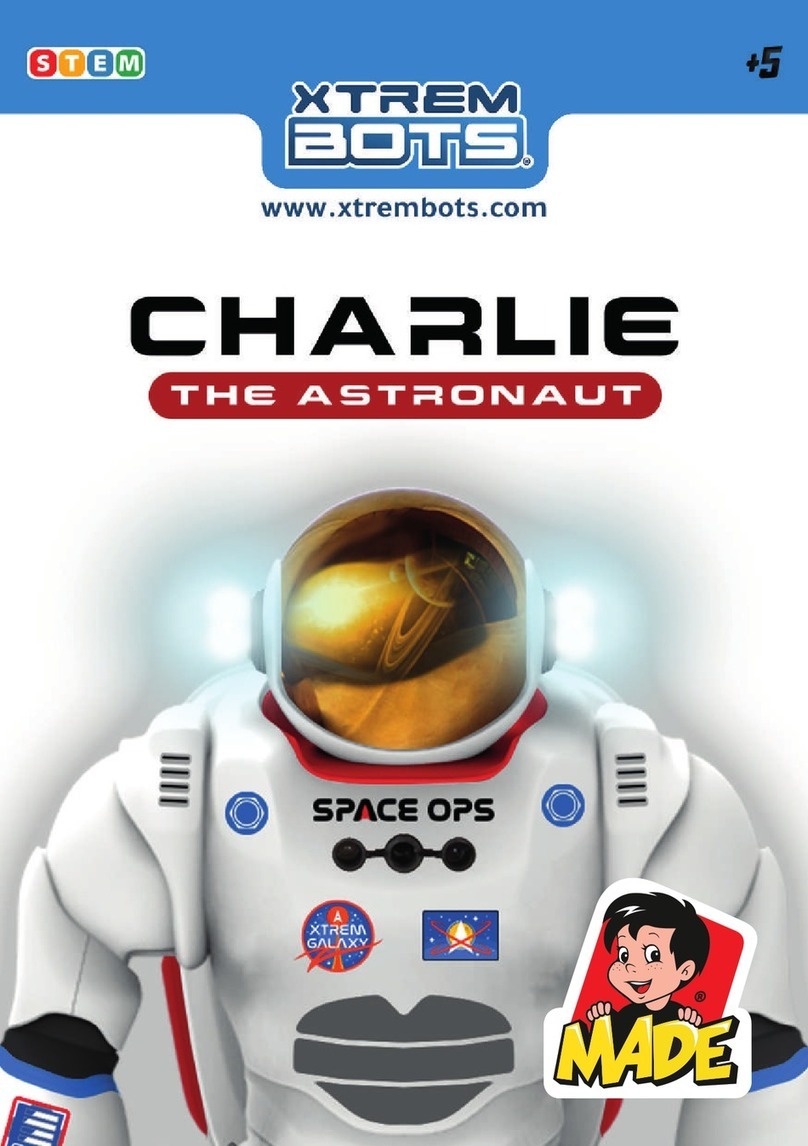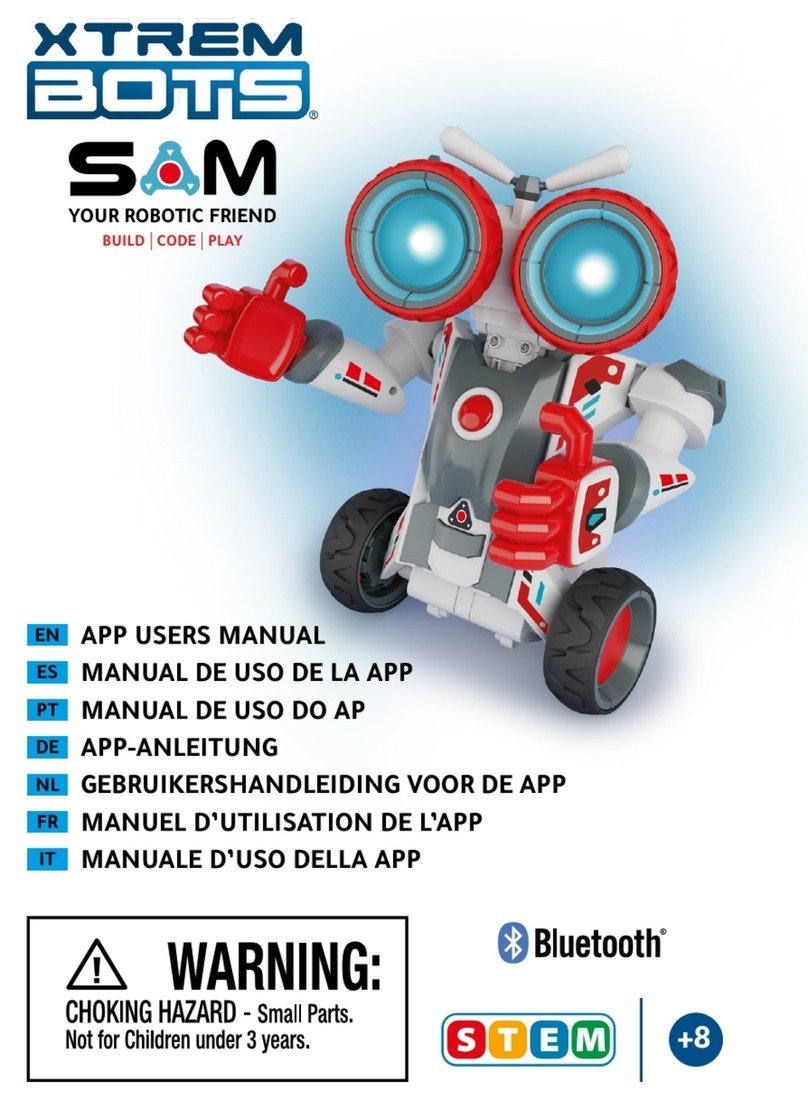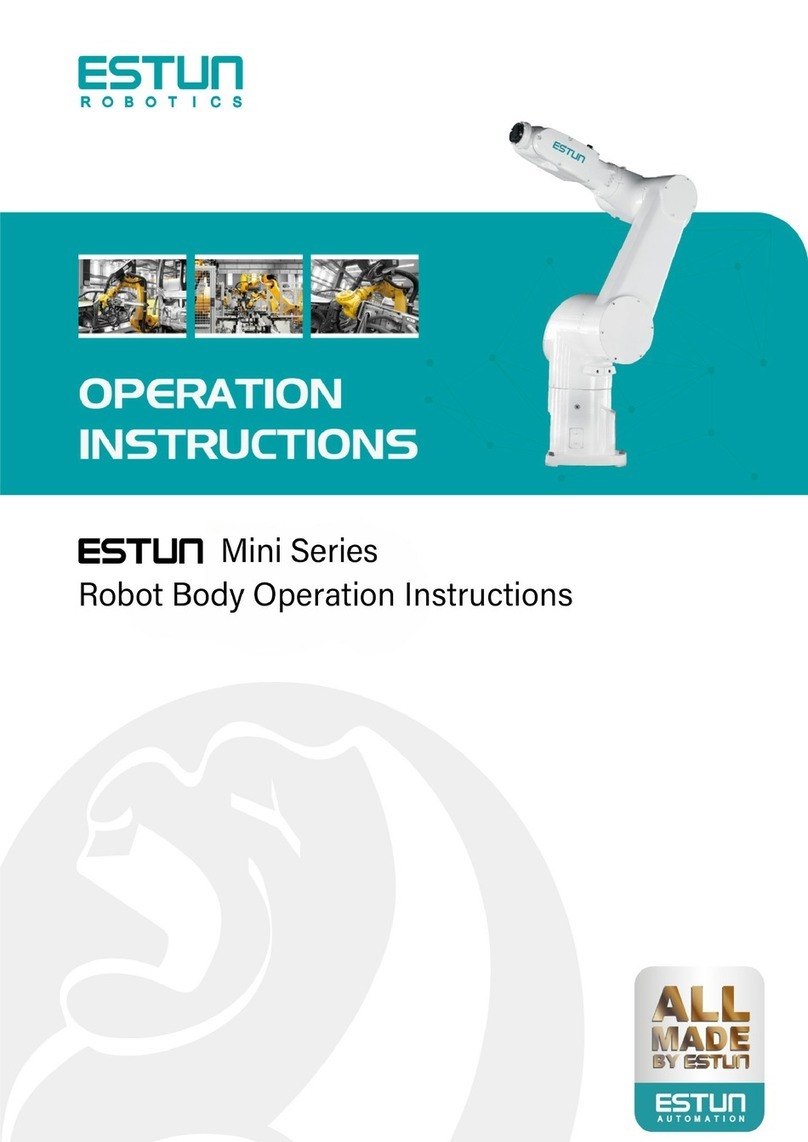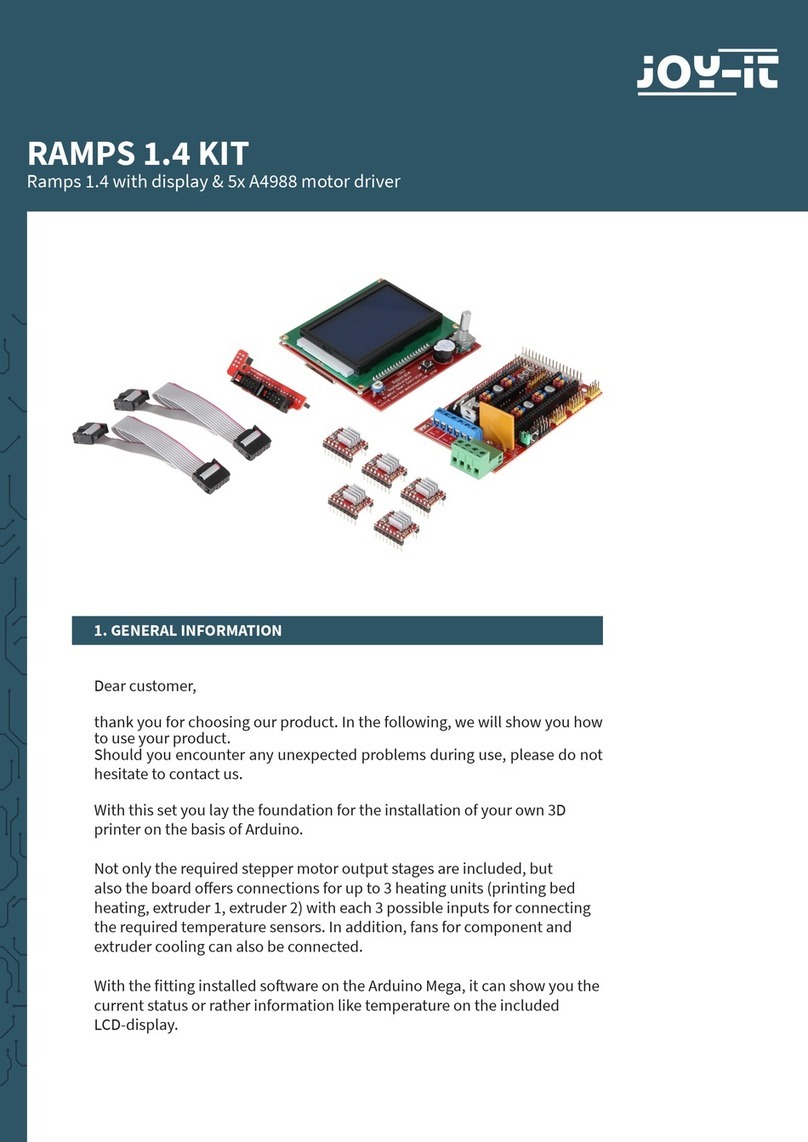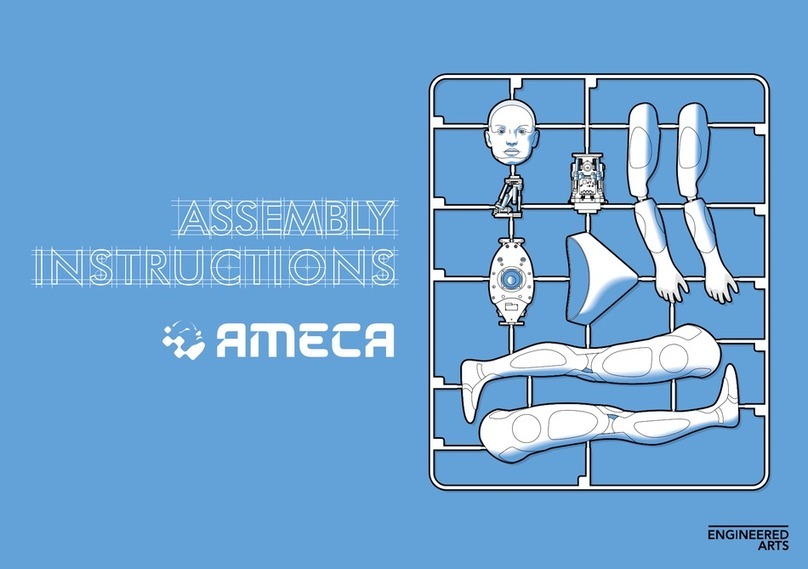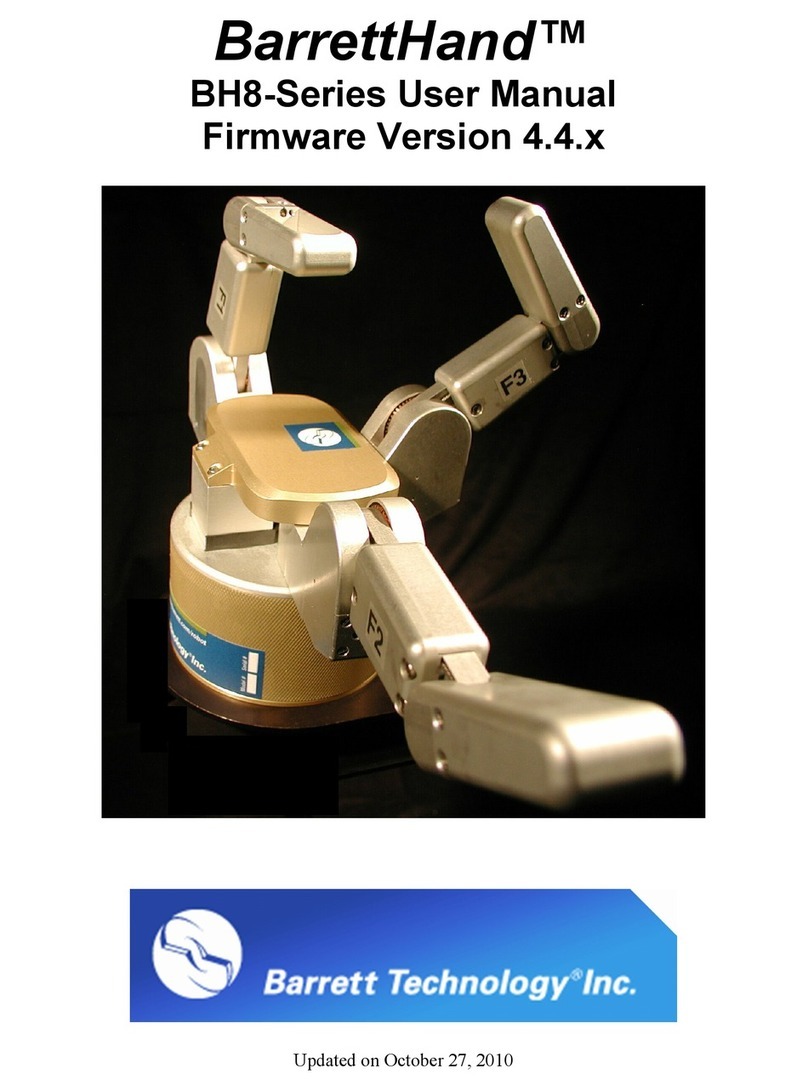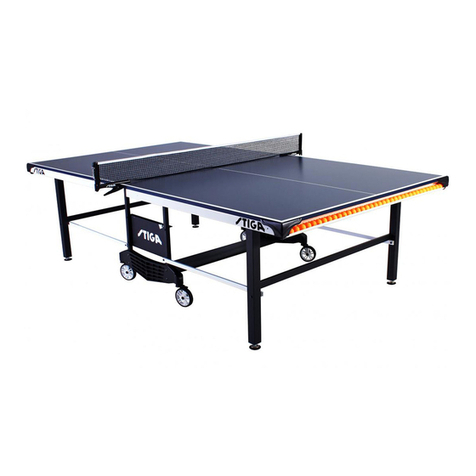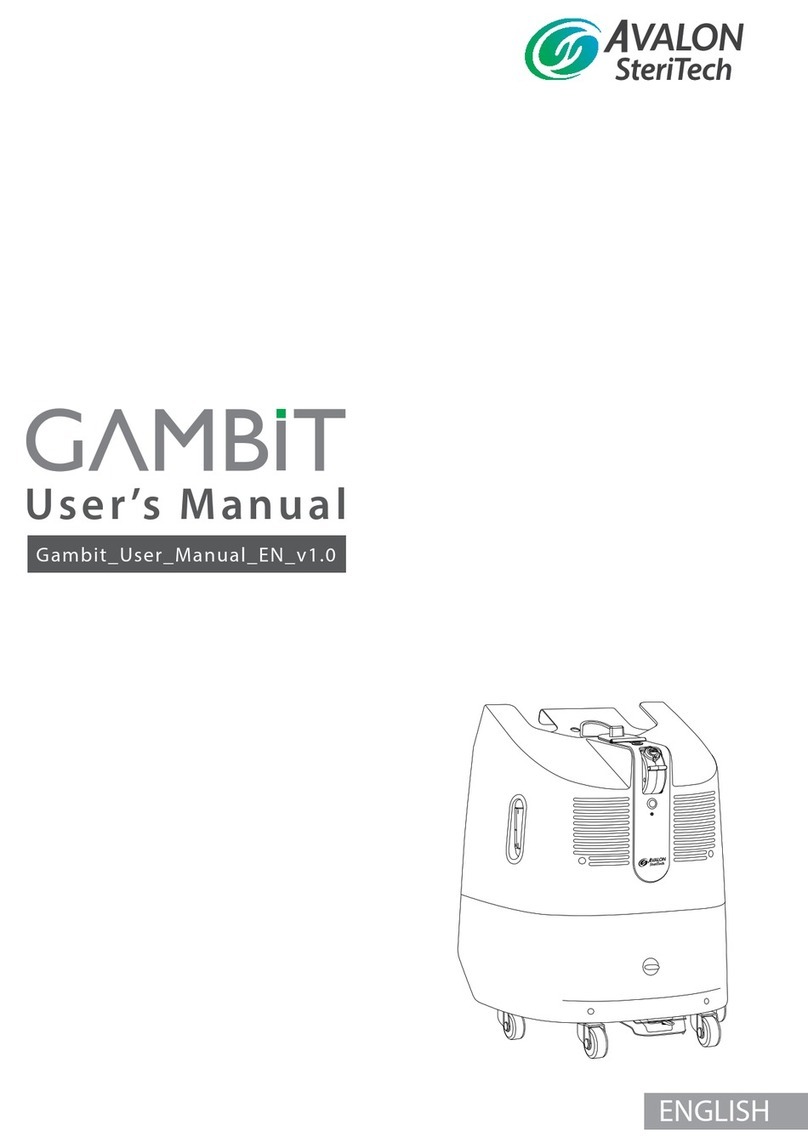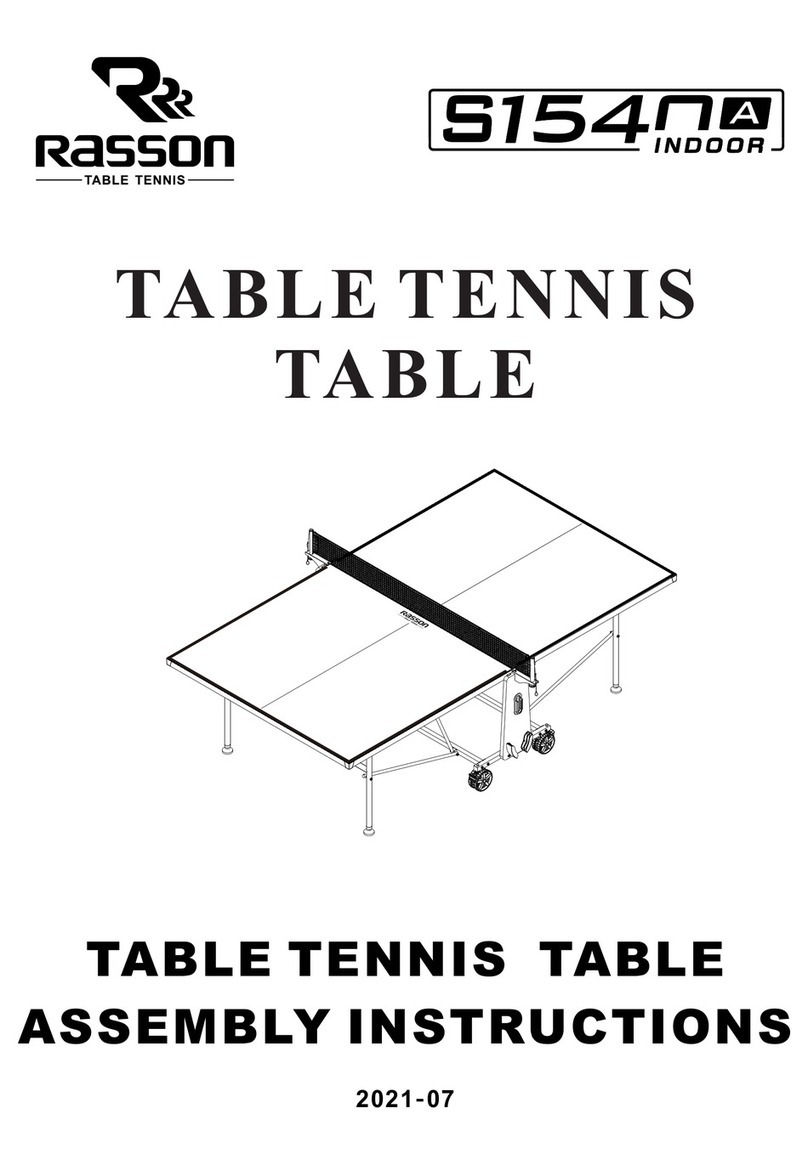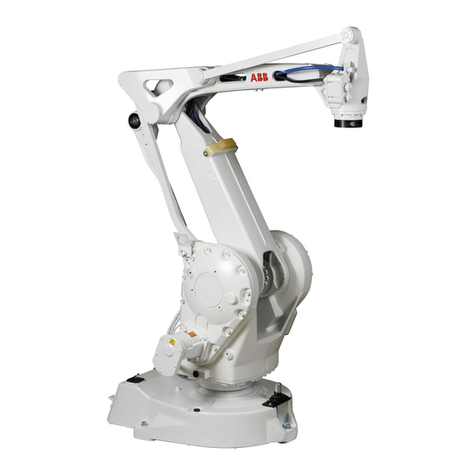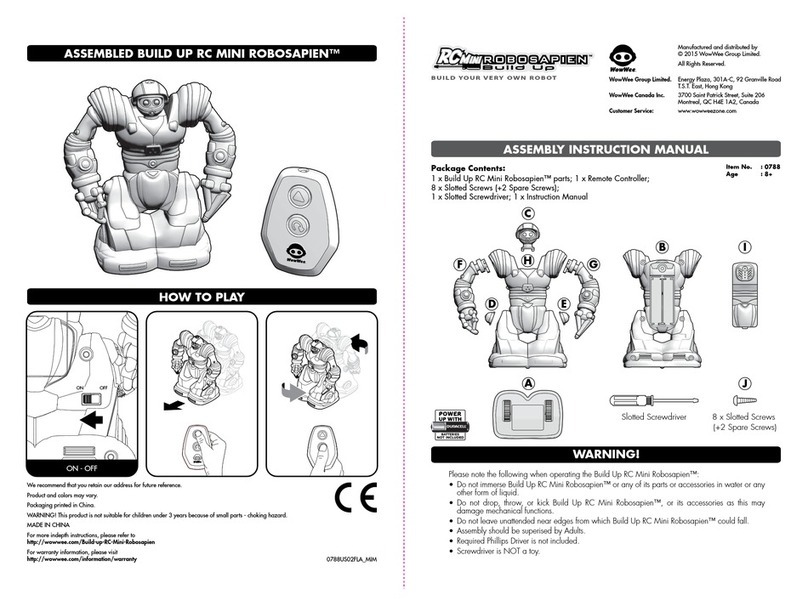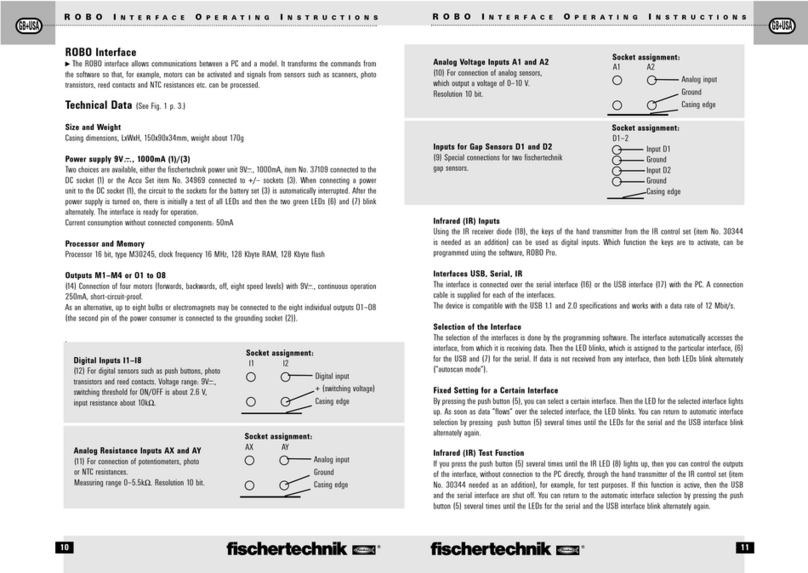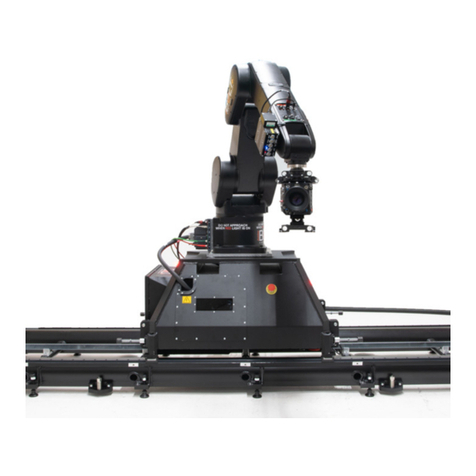ROEQ TMC300Ext User manual

ROBOTIC EQUIPMENT
TMC300Ext Instruction Manual
Valid from serial number 5110265A200000391
2020-12-17

TMC300Ext Instruction Manual
Revision: 2.01
Publicly available
p. 2 of 55
Copyright and disclaimer
All rights reserved. No parts of this manual may be reproduced in any form without the express written
permission of ROEQ ApS. ROEQ makes no warranties, express or implied, in respect
of this document or its contents. In addition, the contents of the document are subject to change
without
prior notice. Every precaution has been taken in the preparation of this manual. Nevertheless, ROEQ
assumes no responsibility for errors or omissions or any damages resulting from the use of the
information contained.
Copyright © 2019 by ROEQ ApS
Contact the manufacturer:
ROEQ ApS
Kobbervænget 5
DK-5492 Vissenbjerg
www.ROEQ.dk
CVR: 38656872

TMC300Ext Instruction Manual
Revision: 2.01
Publicly available
p. 3 of 55
Table of contents
1 Introduction ................................................................................................................................. 5
1.1 Intended readership..................................................................................................................... 5
1.2 Where to find information........................................................................................................... 5
1.3 Revision history............................................................................................................................ 5
2 Safety............................................................................................................................................ 6
2.1 Overview ...................................................................................................................................... 6
2.2 Safety concept.............................................................................................................................. 6
2.3 General safety instructions .......................................................................................................... 7
2.3.1 Warning notes.............................................................................................................................. 7
2.3.2 Caution notes............................................................................................................................... 8
2.3.3 Notices.......................................................................................................................................... 9
2.4 Safety circuit............................................................................................................................... 10
2.5 Safety system specifications ...................................................................................................... 10
2.6 Intended use .............................................................................................................................. 10
2.7 Foreseeable misuse.................................................................................................................... 11
2.8 Risk assessment.......................................................................................................................... 11
2.9 Residual risks.............................................................................................................................. 11
2.9.1 Crush hazards............................................................................................................................. 11
2.9.2 Low speed collision hazards....................................................................................................... 11
2.10 Directive conformity................................................................................................................... 12
3 Commissioning........................................................................................................................... 13
3.1 E-Stop and Reset ........................................................................................................................ 13
3.2 Safety zones ............................................................................................................................... 13
3.3 Alleviating crushing hazards....................................................................................................... 13
3.4 Use.............................................................................................................................................. 14
3.5 TMC300Ext mounting................................................................................................................. 15
3.6 SICK setup (Applies for ROEQ Cart300 solutions) ...................................................................... 17
3.6.1 Connecting to the Sick Safe laser scanner system ..................................................................... 17
3.6.2 Setting up COM settings (Sick scanners).................................................................................... 17
3.6.3 Backup of existing laser scanner configuration (front/rear scanners) Recommended ............. 19
3.6.4 Uploading laser scanner configuration to Sick Safe laser scanners........................................... 22
3.7 ROEQ cart and docking station mounting.................................................................................. 27
3.8 Setting parameters in the MiR robot ......................................................................................... 29
3.8.1 Setting the distance to marker (for disabling collision checks).................................................. 29
3.8.2 Setting Docking parameters in MiR –only for MiR firmware after 2.4.1 .................................. 30
3.9 Calibration of the MiR robot front laser (Optional)................................................................... 31
3.10 Create docking station position ................................................................................................. 32
3.11 Global offset adjustment (Optional) .......................................................................................... 34
3.12 Calibration of individual docking station offsets (Optional) ...................................................... 39
3.13 Test of ROEQ supplied SICK safety zones................................................................................... 41
3.14 Test of ROEQ supplied docking sequence.................................................................................. 42
4 Detailed presentation ................................................................................................................ 43
4.1 Product description.................................................................................................................... 43
4.2 Identification label ..................................................................................................................... 43
4.3 TMC300Ext ................................................................................................................................. 44
4.4 Lock bolt homing button............................................................................................................ 45
4.5 ROEQ cart components.............................................................................................................. 46
4.6 ROEQ docking station components............................................................................................ 46
4.7 Troubleshooting......................................................................................................................... 47
5 Technical specifications.............................................................................................................. 48

TMC300Ext Instruction Manual
Revision: 2.01
Publicly available
p. 4 of 55
5.1 TMC300Ext specifications .......................................................................................................... 48
5.1.1 TMC300Ext –dimensions drawing............................................................................................. 49
5.2 Cart300 with rails –specifications ............................................................................................. 50
5.2.1 Cart300 with rails –dimensions drawing................................................................................... 51
5.3 DS100/200P Ext Floor docking station –specifications ............................................................. 51
5.3.1 DS100/200P Ext Floor docking station –dimensions drawing................................................... 52
6 Maintenance .............................................................................................................................. 53
6.1 Overview .................................................................................................................................... 53
6.1.1 Regular cleaning and inspection ................................................................................................ 53
7 Appendices................................................................................................................................. 54
7.1 Declaration of conformity.......................................................................................................... 54
7.2 Formulas for calculating the global offsets of the robot ........................................................... 55

TMC300Ext Instruction Manual
Revision: 2.01
Publicly available
p. 5 of 55
1Introduction
1.1 Intended readership
The purpose of this instruction manual is to support the system integrator. It assumes a basic level of
knowledge regarding the setup process of the MiR robot and software interface. Furthermore, the
installation process of both the TMC300Ext and Cart300 requires some level of software knowledge and
craftmanship.
This instruction manual contains all necessary information about the installation and usage of
TMC300Ext and related equipment.
1.2 Where to find information
On www.roeq.dk, Partner Portal (login required), a wide range of information can be found, e.g.:
software updates, instruction manuals, Sick safety zones, 3D CAD files and more.
1.3 Revision history
Document version
Date
Description
2.01 (this version)
2020.12.17
Creation of docking stations with ROEQ GUI updated for
current version of the ROEQ GUI.
2.00
2020.07.23
Product names update from “TMOZ” to “TMC300Ext” and
from “CP300”to “Cart300” with rails.
Minor layout updates.
1.00
2019.10.16
First release

TMC300Ext Instruction Manual
Revision: 2.01
Publicly available
p. 6 of 55
2Safety
Before installation and operation read the information in this section carefully and pay attention to the
safety instructions and warnings.
The CE-approval has been given to the ROEQ system as delivered from ROEQ and installed on
MiR100/MiR200. Any additional modifications will require a new risk assessment of the specific
configuration.
2.1 Overview
This manual contains notices to be observed to ensure personal safety and to prevent damage to
property. The notices referring to personal safety are highlighted in the manual by a safety alert symbol.
The notices shown below are graded by signal words to indicate degree of danger.
The ROEQ products are intended to be used with MiR100/MiR200 robots.
Read the MiR manual carefully before commissioning the combined solution.
In the following some safety issues may be identical to sections of the MiR user guide.
2.2 Safety concept

TMC300Ext Instruction Manual
Revision: 2.01
Publicly available
p. 7 of 55
2.3 General safety instructions
This section contains general safety notes. Some safety notes are repeated or further specified in
other sections of the manual and further safety notes are present throughout the manual.
2.3.1 Warning notes
•Ensure proper mounting of load during transport
Danger of personal injury from overturning robot or falling load.
All accessories and loads mounted on top of the robot/cart should be
fastened responsibly and meet specifications stated in section 6.
•Avoid leakage of fluid during transport
Danger of personal injury from leaking fluid.
Make sure that loads containing fluids do not leak during transport.
•Update maps to avoid hazards on the route
Danger of personal injury and/or damage to the robot.
Make sure to update maps to avoid driving in hazardous zones such as close
to stairways.
•Do not drive vehicle irresponsibly
Danger of personal injury and/or damage to the robot.
The robot should not be driven over edges or in other ways operated
irresponsibly.
•Where to place
Avoid driving in areas with obstacles and always keep all drive paths clean
and free for obstacles.
Avoid placing docking stations on slopes.
Always check weight/speed/slope conditions before commissioning.

TMC300Ext Instruction Manual
Revision: 2.01
Publicly available
p. 8 of 55
2.3.2 Caution notes
•Do not use the robot or cart to transport people
Risk of personal injury and/or damage to the robot.
The robot or cart should never be used to transport people. This will revoke
compliance with the applied standards.
•Avoid gradients above 5% on the route
Risk of personal injury and/or damage to the robot.
The surface grade (ramps etc.) cannot exceed 5% as this may cause the
robot to skid.
•Only drive on even and dry surface
Risk of personal injury and/or damage to the robot.
Wet and uneven surfaces may cause the robot to skid.
•Do not overload the robot or cart
Risk of personal injury and/or damage to the robot/cart.
Maximum payload for all ROEQ products are stated in section 6.
•Do not use the robot/cart on board ships
Risk of personal injury and/or damage to the robot.
Unstable surface caused by moving vessel may cause the robot to skid.
•Turn off the robot before removal or installation of the TMC300Ext
Risk of personal injury and/or damage to the robot or ROEQ equipment.

TMC300Ext Instruction Manual
Revision: 2.01
Publicly available
p. 9 of 55
2.3.3 Notices
•Indoor use only
Risk of damage to the robot and/or cart.
The robot and cart are made for indoor use only and should never be used
outdoor.
•Avoid small objects on the floor in the robot’s area
Risk of property damage and/or minor damage to the robot.
The robot cannot detect obstacles lower than 50mm and may overrun
smaller objects.
•Remove unwanted object from the floor in the robot’s area
Risk of inefficient execution of orders.
The robot will go around objects that are not part of the map, but this may
influence the efficiency of the planned route.
•Avoid overheating of components
Risk of damage to the robot or robot components.
The ambient temperature in the robot’s environment must not exceed 50
degrees Celsius - 122 degrees Fahrenheit.
•Avoid exposure of the robot to excessively humid or dry environment
Risk of damage to the robot or robot components.

TMC300Ext Instruction Manual
Revision: 2.01
Publicly available
p. 10 of 55
2.4 Safety circuit
The TMC300Ext employs the safety circuit installed in the MiR robot. The same safety principles apply
when a ROEQ top module is installed, as are valid when the robot operates in isolation. That is the robot
is installed with optical safety zones so that if a person or other moving object enters these zones, the
robot will be forced into emergency stop. To operate the robot with a ROEQ top module and ROEQ
carts, the default safety configuration of the robot needs to be updated. The residual risks of this
updated safety configuration are summarized in section 2.9.
When using ROEQ equipment that extends beyond the extend of the robot e.g. a top module or a top
module with a cart, the robot will automatically change to larger footprint based on the size of the
equipment. Changing to larger footprint and larger safety zones are managed by Sick Safety
components.
MiR100/200 is designed with redundant electrical safety circuit including Sick Safety components. If any
internal errors in the safety circuit occur, the robot will immediately go into emergency stop which
means that all moving parts will be voltage free by mechanical disconnection. Only when the
redundancy is provided, it is possible to reset the emergency stop and continue.
For more information, refer to MiR user guide and sections 2.5 and 3.6 in this instruction manual.
2.5 Safety system specifications
When equipping a MiR100/MiR200 robot with a ROEQ TMC300Ext top module it is paramount to install
the enclosed updates for the SICK safety system.
The TMC300Ext exceeds the physical size of the MiR100/MiR200 robot and therefor the standard safety
zones supplied by MiR does no longer suffice.
To uphold the safe behaviour and the general functionalities of the system, the proprietary ROEQ safety
configuration must be installed.
After installing the ROEQ safety configuration, the TMC300Ext equipped MiR100/MiR200 robot will
furthermore become able to automatically adjust the width of the safety zones when driving with or
without carts.
See section 3.6 for detailed instructions on how to update the SICK Safety System.
2.6 Intended use
The ROEQ product portfolio of MiR accessories are intended to be installed onto a suitable MiR robot.
Apart for ROEQ specific requirements stated in section 4.7, the use of the ROEQ products are restricted
by the limitations provided by MiR.
The TMC300Ext is intended to be commissioned and used in indoor industrial environments where
access for the public is restricted.
The TMC300Ext top module is intended for transporting e.g. euro pallets, and other large size cargo. The
cargo must be placed correctly in the rails.
When using ROEQ top modules and accessories (carts, racks, etc.) the size of the robot with attached
units can result in larger application than the robot itself. For ROEQ standard applications this is handled
by changing the footprint by the ROEQ generated missions and changing safety zones by a built-in safety
switch in the top modules.
In each installation, end-user applications that are mounted on the ROEQ standard accessories must
meet the limitations of use of these or if the end user application require increased footprint or safety
zones that has to be changed/implemented by the commissioning part before use of the products.
Also, it is the responsibility of the commissioning part/company to ensure that the full/entire/combined
installation including, but not limited to; top modules carts, docking stations, receiving stations etc. are
covered by a risk assessment before commissioning.
Combined machines (here robot and top module) must be fitted with a new identification label for the
combined machine.
Depending on the environment (trained/non-trained personal) where ROEQ docking stations are to be
used in, "Operating hazard zone" marking on floor might be required.

TMC300Ext Instruction Manual
Revision: 2.01
Publicly available
p. 11 of 55
2.7 Foreseeable misuse
The ROEQ product portfolio of MiR accessories are intended to operate in the same conditions as the
MiR100/MiR200 robots.
For MiR robots foreseeable misuse –refer to MiR specifications/guidance.
Any use or application deviating from the intended use stated by ROEQ is deemed to be misuse. This
includes, but is not limited to:
•Overloading of the robot and top applications
•Failure in commissioning robot and accessories
•Failure to make a risk assessment of the full installation
2.8 Risk assessment
The ROEQ product portfolio of MiR accessories are intended to operate in the same conditions as the
MiR100/200 robots.
For information about MiR robots Risk assessment –refer to MiR specifications/guidance.
Always make sure to make a risk assessment in order to achieving a safe installation. Performing the risk
assessment is the responsibility of the individuals who are commissioning the system (robot,
accessories, top application, end-user interface) in the environment it will be used in.
2.9 Residual risks
The ROEQ product portfolio of MiR accessories are intended to operate in the same conditions as the
MiR100/200 robots.
For Residual risks for the robot, refer to MiR specifications/guidance.
For the ROEQ top module, the residual risks and potential hazards outlined below has been identified.
These must be considered during integration and commissioning of the product. Some suggestions for
this are included in section 3.
2.9.1 Crush hazards
It is potentially possible for a person to position his body or body parts, e.g. hands and feet, in a fashion
that could result in it getting caught/crushed by the robot while docking or undocking from stations.
Stay clear of the docking stations while the robot docks or undocks. Mark the docking stations as hazard
zones, following the description in section 3.3.
The residual risk related to this has been deemed acceptable, as the docking zone is considered a hazard
operating zone. Further, the robot docks at very low speed and is therefore easy to avoid.
2.9.2 Low speed collision hazards
The ROEQ TMC300Ext module is larger than the footprint of the robot. The size of the TMC300Ext thus
implies that it is installed with an overhang with respect to the robot. To allow the robot to dock into
docking stations and automatic chargers despite this overhang, the low speed safety zones around the
front of the robot, does not cover the front of the top module, as the robot would otherwise go into
emergency stop when getting close to a dock or charger. This is illustrated in Figure 1 where the front of
the smallest zone is dashed, to indicate that it follows the edge of the robot, and not the edge of the top
module. Notice that it is only the low-speed (< 20 cm/s) safety zones that do not include the front of the
top module. The TMC300Ext is fully covered while the robot drives at normal speed.
The reduced low-speed safety zone implies that the robot will not stop if a person jumps in front of it
while going at low speeds (<20 cm/s), as this person will not trigger the safety zones. This is only the
case if the robot moves straight ahead such as to dock. If the robot starts to turn, as it usually would if it
is navigating at low speeds, the safety zones are enlarged to cover the full TMC300Ext footprint.
The residual risk concerning this has been deemed acceptable as any collision would happen at very low
speed, at which the damage is minimal, and the robot is easy to avoid.

TMC300Ext Instruction Manual
Revision: 2.01
Publicly available
p. 12 of 55
Figure 1 Safety zones with and without cart. The faster the robot moves, the larger the active safety zone becomes.
To prevent the robot from going into e-stop on account of the legs of the cart, two small cutouts have
been made to the scanner zones when driving with a cart. These cut-outs are also shown in Figure 1.
These cut-outs imply that it is potentially possibly for a person to place his foot in a way so that it will be
run over by the wheels of a cart.
The residual risk pertaining to this has been deemed acceptable, as it is highly unlikely that this will
happen while the robot is moving, and if the robot is standing still, it will require an almost deliberate
action of the person.
2.10 Directive conformity
The TMC300Ext has been designed and manufactured in accordance to EU directive 2006/42/EF -
Directive of Machinery.

TMC300Ext Instruction Manual
Revision: 2.01
Publicly available
p. 13 of 55
3Commissioning
A full installation involves following steps:
1. TMC300Ext mounting Section 3.5
2. SICK setup Section 3.6
3. Mounting of docking station Section 3.7
4. Setting parameters in MiR robot Section 3.8
5. Calibration of front laser (SICK) Section 3.9
3.1 E-Stop and Reset
Please note, that after installing the TMC300Ext on the MiR, the Emergency-Stop and the Reset button
are now operated from the TMC300Ext.
There are two (2) Emergency stop buttons on the TMC300Ext, one on the front panel and one on the
rear panel. The Reset button is located on the rear panel.
Figure 2. Emergency stop button (to the left) and Reset button (to the right).
3.2 Safety zones
When using top modules for carts the robot will automatically change safety zones when carrying carts.
This requires that the safety configurations supplied with the TMC300Ext are installed on the MiR robot
and the function verified before using the MiR-ROEQ combination.
When the robot drives without cart the robot will use standard safety zones (Figure 1 left) but when
driving with cart the robot will automatically change to enlarged safety zones (Figure 1 right).
Please note that it is always the responsibility of the commissioning part/company to ensure that the
safety zones cover the size of the end-user application.
3.3 Alleviating crushing hazards
TMC300Ext includes docking stations at endpoints to collect/deliver carts. Despite various risk
mitigations implemented in the design, safety zones, footprint etc. there is a potential risk of getting
pinned between docking stations and the robot.
To avoid potential personal injuries, it is recommended to instruct the employees/personal that are
using and or working close to the system.
It is also recommended to mark the area in front of the docking stations as “potential hazard zones” e.g.
by using “hazard” tape on the floor.

TMC300Ext Instruction Manual
Revision: 2.01
Publicly available
p. 14 of 55
Figure 3. Marking of potential hazard zones.
3.4 Use
After setting up the ROEQ system including generating missions by using the ROEQ program all general
operations of the ROEQ system are controlled by missions in the MiR standard interface.
Figure 4. ROEQ software in the MiR interface.
In addition to this instruction manual, a number of videos for selected steps can be found on the
enclosed USB-drive and on Partner Portal (www.roeq.dk). Log-in is required.

TMC300Ext Instruction Manual
Revision: 2.01
Publicly available
p. 15 of 55
3.5 TMC300Ext mounting
This section describes the unpacking and mounting process of the TMC300Ext.
Step
Instruction
Illustration
1.
Remove the inspection
plate by unscrewing the
T20 bolts highlighted on
the illustration.
When the inspection
plate has been
dismounted, remove the
yellow cable tie to free
the 4 top module cables.
NOTE: Never lift the TMC300Ext in the Emergency Stops.
NOTE: Due to the size and weight of the TMC300Ext it is recommended that two persons lift it
up from the packaging.
2.
Carefully lift the
TMC300Ext from the
crate and place it on an
elevated platform (e.g. a
table or pallet) to access
the underside of the
TMC300Ext.
3.
Remove the 4 bolt-
access cover plugs by
using a large flat-tip
screwdriver.
4.
Remove the 4 white
plastic M10 top nuts
from the pre-mounted
M10 bolts.

TMC300Ext Instruction Manual
Revision: 2.01
Publicly available
p. 16 of 55
5.
Place the TMC300Ext on
top of the
MiR100/MiR200 robot.
To connect the 10-pin
connector and Wi-Fi
cable, the TMC300Ext
must initially be placed
slightly towards the front
of the robot as illustrated
until adequate
accessibility has been
obtained.
6.
When the two cables
have been properly
connected, carefully slide
the TMC300Ext towards
the rear end of the robot
until the ethernet- and 4-
pin connectors align with
the TMC300Ext base
plate cut-out as
illustrated.
7.
Fasten the TMC300Ext to
the robot by tightening
the four pre-mounted
M10 bolts highlighted on
the illustration using
6mm hex key.
Carefully connect the 4-
pin and ethernet
connector to the robot
interface.
8.
After tightening the bolts
and mounting all cables
reinstall the 4 bolt-access
cover plugs into the
holes in the top plate
and remount the
inspection plate.

TMC300Ext Instruction Manual
Revision: 2.01
Publicly available
p. 17 of 55
3.6 SICK setup (Applies for ROEQ Cart300 solutions)
This describes the Sick Safe s300 laser scanner configuration to get started with the ROEQ cart system.
3.6.1 Connecting to the Sick Safe laser scanner system
Since the Sick Safe laser scanners are interfaced with their own software, Sick Flexi Soft Designer and
Sick CDS software must be installed on the PC used for the SICK setup.All software necessary for the
implementation of the TMC300Ext is included on the enclosed USB-drive. Sick Flexi Soft Designer utilizes
CDS to configure the scanners.
Note: It is highly recommended to back up (upload) existing safety zones from the Main Module and
both Front- and Rear laser scanners before transferring (download) the new safety zones. This is
described later in this instruction.
Definition of terms in the Sick program:
•Download to scanner: Here the laser scanners are the units to be downloaded to (will be stored
on laser scanners).
•Upload to PC: Here the PC connected to the robot (laser scanners) is the unit to be uploaded to
(will be stored on PC)
3.6.2 Setting up COM settings (Sick scanners)
This section describes the procedure for getting connected to the Sick Safe laser scanner system.
These steps are also described in a video enclosed on the USB-drive.
9.
After installation of the
TMC300Ext the Reset
Button, Emergency Stop
and Antenna are now
situated on the
TMC300Ext.
Step
Instruction
1.
Log on to the robots Wi-Fi.
2.
Connect to the robot via web browser: mir.com
Step
Instruction
Illustration
1.
Copy the content of the
USB-drive to the hard-
drive on the PC.
2.
Start the program
Sick Flexi Soft Designer
from the PC.
3.
A connection must be
configured to connect
the PC to the scanners.
Start the connection
setup by clicking “Com
settings”.

TMC300Ext Instruction Manual
Revision: 2.01
Publicly available
p. 18 of 55
4.
The connection settings
window will appear. A
TCP/IP connection is
required between the PC
and the scanners.
Click “Add TCP/IP
connection profile”.
5.
To create the new
profile, fill out the entry
name and set the IPv4
address to 192.168.12.9,
which is the IP of the
scanners.
Click “OK”.
6.
Click the check mark to
test the connection.
When the connection is
accepted, mark the
connection as default by
double clicking the
connection.
Click “OK” to terminate
the setup.

TMC300Ext Instruction Manual
Revision: 2.01
Publicly available
p. 19 of 55
3.6.3 Backup of existing laser scanner configuration (front/rear scanners)
Recommended
This section describes the procedure for taking backup of existing Sick configurations before transferring
the ROEQ Sick configuration from the enclosed USB-drive to the Sick Safe laser scanner system.
Step
Instruction
Illustration
1.
Click “Connect” to connect
to the main Module.
When the connection is
done (takes some time),
the SICK main Module will
be ready for doing the
backup.
2.
You may be prompted
with a warning that the
physical system is
different than that of the
configuration plug.
This is because the same
safety configuration is
suitable for different
variations of the safety
hardware.
Select “Continue upload
with physical system
configuration”.
3.
Select YES to: Do you want
to upload the
configuration on “SICK
Flexi Soft main module
FX3-CPU1”?

TMC300Ext Instruction Manual
Revision: 2.01
Publicly available
p. 20 of 55
4.
Double click the front laser
(S300.CPU1[0].EFI1.1)
5.
Select “Read configuration
from device”
6.
Repeat step 3 and 4 for
taking backup of the rear
scanner
Double click the rear laser
(S300.CPU1[0].EFI2.1)
Table of contents
Other ROEQ Robotics manuals
